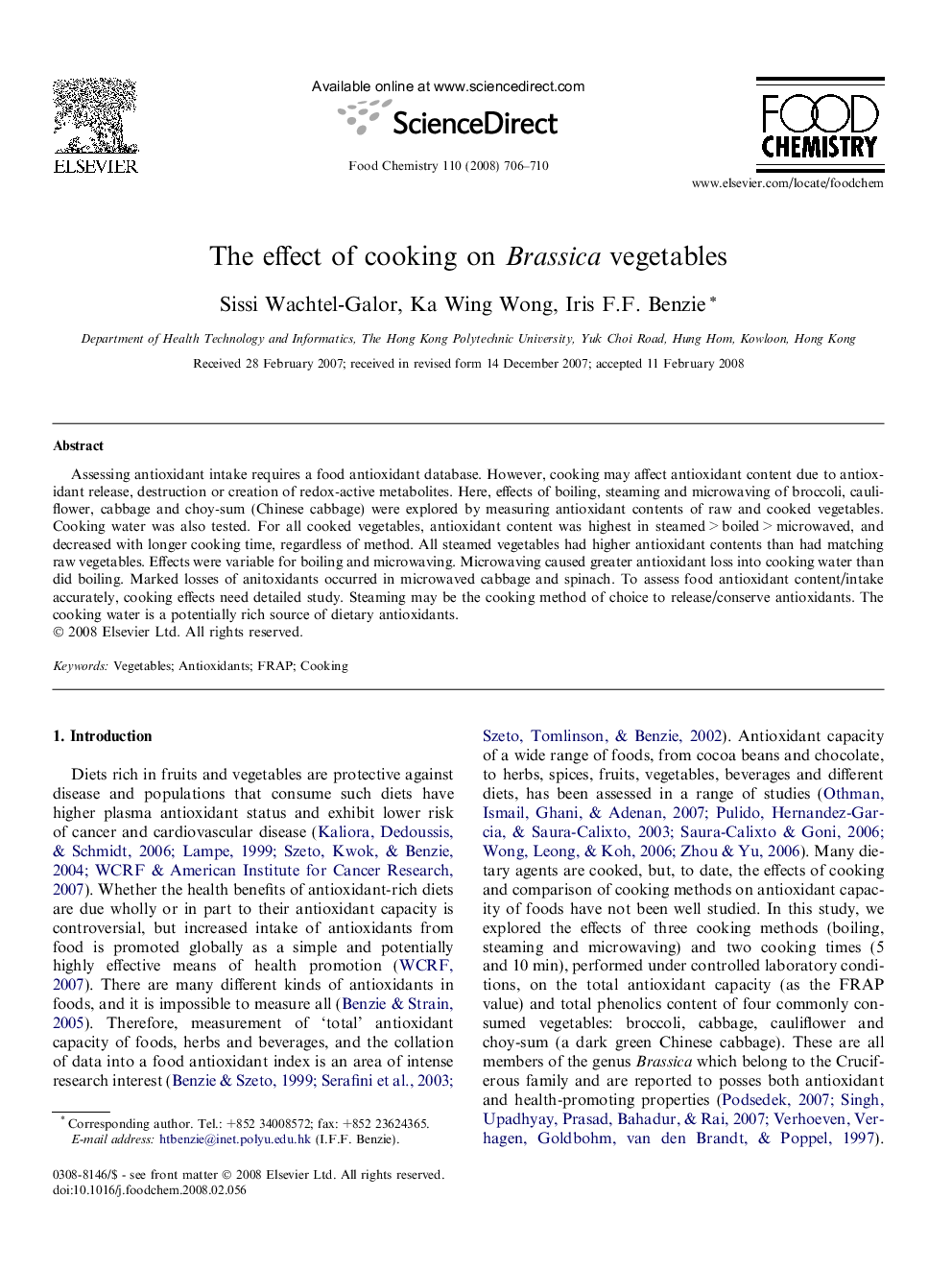| کد مقاله | کد نشریه | سال انتشار | مقاله انگلیسی | نسخه تمام متن |
|---|---|---|---|---|
| 1186607 | 963444 | 2008 | 5 صفحه PDF | دانلود رایگان |

Assessing antioxidant intake requires a food antioxidant database. However, cooking may affect antioxidant content due to antioxidant release, destruction or creation of redox-active metabolites. Here, effects of boiling, steaming and microwaving of broccoli, cauliflower, cabbage and choy-sum (Chinese cabbage) were explored by measuring antioxidant contents of raw and cooked vegetables. Cooking water was also tested. For all cooked vegetables, antioxidant content was highest in steamed > boiled > microwaved, and decreased with longer cooking time, regardless of method. All steamed vegetables had higher antioxidant contents than had matching raw vegetables. Effects were variable for boiling and microwaving. Microwaving caused greater antioxidant loss into cooking water than did boiling. Marked losses of anitoxidants occurred in microwaved cabbage and spinach. To assess food antioxidant content/intake accurately, cooking effects need detailed study. Steaming may be the cooking method of choice to release/conserve antioxidants. The cooking water is a potentially rich source of dietary antioxidants.
Journal: Food Chemistry - Volume 110, Issue 3, 1 October 2008, Pages 706–710